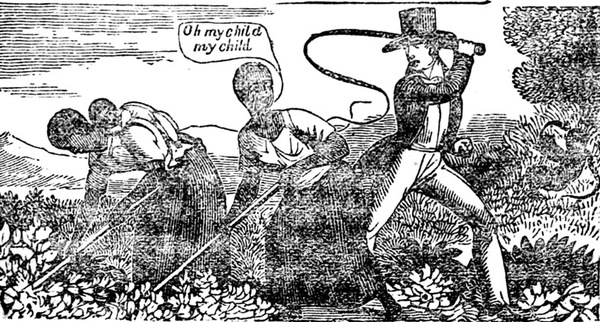
–>
March 4, 2023
For Black History Month 2022, Disney released a Proud Family episode asserting that slaves built America, and Hulu began streaming the 1619 Project docuseries. The latter builds on The New York Times’s 1619 Project, which presents American slavery as the cruelest in the world. This is nonsense and, even as Black History Month 2023 is in the rear-view mirror, it must be countered because it serves as the basis for a never-ending, society-corrupting shakedown.
‘); googletag.cmd.push(function () { googletag.display(‘div-gpt-ad-1609268089992-0’); }); }
Both productions assert that, in addition to the basic immorality of slavery itself, whites were unrelievedly cruel to black slaves. From that foundation, leftists insist that the world’s most prosperous and educated black population are still victims of white oppression, justifying economy-busting reparations. It’s a shakedown.
In fact, the uncontested winners for “world’s cruelest slavery” exist outside America’s borders and history. In Haiti, for example, slaves were treated so poorly that they died after a few years. It was cheaper to purchase new slaves than to treat slaves humanely.
Non-American slave owners discouraged reproduction because children often died before they were productive. In 1802, the U.S. black population was 1 million. If the US had duplicated conditions in the Caribbean, the black population would have been 186,000—and that attrition rate would still have been better than in Middle Eastern nations. A thousand years of black slavery are concealed by the virtual absence of black people.
‘); googletag.cmd.push(function () { googletag.display(‘div-gpt-ad-1609270365559-0’); }); }
In the Middle East and Africa, it was normal to castrate young boys without pain reducers. The greatest demand, though, was for female sex slaves—”mats of pleasure.” When women became old, say 40, they were often left to die. The immorality of slavery in America, notwithstanding, American enslavers were, uniquely, required to care for their slaves until they died.

Image: Illustrations from the Life and Adventures of Henry Bibb, 1849. Public domain.
The 1619 Project’s cruelty narrative has endless stories about an inhumane planter class taking pleasure in whipping slaves, dividing families like livestock, and raping slave women without consequence. These stories aren’t fiction, but they are exaggerated. More importantly, they are only a slice of the history of black slavery in America—which, again, while inherently cruel and immoral, was not extraordinarily cruel.
Before the 1970s, cruelty narratives were largely uncontested. Then, cliometricians analyzed mountains of historical data to refine and, sometimes, refute accepted slave history. This data showed that whipping slaves, dividing families, and raping slave women were not as common as portrayed and that these actions had consequences.
Cliometrician Robert Fogel won a Nobel prize for his work, but was savaged by historians and activists. They didn’t find fault with his data; they objected to the updated narrative.
Fogel went on the defensive and created a tome to respond to his critics. He showed that slave historians could create just about any narrative they wanted using anecdotal data sources from abolitionists or pro-slavers. The problem was that there was no generic slave environment. Instead, there were large and small plantations; tobacco, cotton, indigo, or sugar, plantations; and field hands, craftsmen, drivers, managers, or domestics. Life for a field hand on a sugar plantation was unrelated to life as a blacksmith for hire.
These cliometric analyses, though, are ignored because anyone contesting the “extreme cruelty” narrative is presumptively “racist.” However, those with common sense and open minds would find Fogel’s and other cliometricians’ conclusions logical because they reflect the planters’ overriding motive: making money. Cruelty cut into profits.
‘); googletag.cmd.push(function () { googletag.display(‘div-gpt-ad-1609268078422-0’); }); } if (publir_show_ads) { document.write(“
Planters didn’t delight in whipping slaves. Debilitating punishments were defined in some slave codes, but these were rarely followed because convalescing slaves were unproductive. When slaves reflexively responded to reports of harsh punishments by doing less, that too damaged their productivity. Overseers of slave gangs (about 70% black)—something common on Louisiana sugar plantations—used the whip to maintain productivity. However, plantation owners generally preferred motivational rewards, such as cash, promotions, free time, and superior living conditions, because they were more effective.
Significantly, whipping was not just a punishment for slaves. It was, instead, the punishment of choice for many rule breakers into the 19th century. Petty thieves, those behaving immorally, unruly children, disobedient wives, non-chaste women, and unmarried pregnant women were all punished with the whip.
Yes, slave families were broken up, but “by all indications, slave families were stable and nuclear,” and living under one roof. “It was in the economic interest of planters to encourage the stability of slave families.” Utterly demoralized slaves were the least productive.
Some slave families were, indeed, broken up, but so were the families of indentured servants. Finding buyers for an entire family’s labor was rare. The reality of pre-modern America was that poverty, disease, and war meant broken families were normative. Dangerous jobs broke families apart. Building the New Basin Canal took up to 30,000 Irish family men between 1831 and 1838. Epidemics of yellow fever, cholera, and smallpox decimated families. In the 1850s, about 30,000 orphan children lived in New York City. From 1607 to 1866, wars left over 635,000 white families without fathers.
Contrary to lore, it was rare for planters to rape female slaves. A planter raping a plantation slave would cause a work slowdown and risk inciting a slave revolt. Paranoia about slave revolts and secular and religious laws moderated adultery and pre-marital sex. Sinning planters preferred sex with white women, and prostitutes were plentiful and affordable.
Raping domestic workers was more common. Domestic workers were mostly black slaves in the south and free white immigrants in the north. And while poor white women might have rights on paper, it was often absent in a courtroom. The rape of women of any color remained a problem into the 20th century.
Planters managed slave productivity, making slavery more profitable than prominent historians admit. However, slave labor wasn’t free. From cradle to grave, feeding, caring for, and housing slaves consumed about 90% of the value they produced. Planters did make 2-13% in profit, just enough to keep Southern elites beholden to slavery and the South an agrarian-based economy until emancipation.
Cotton plantations and cloth production are the central facts supporting the argument that slaves built America. However, America was not built on cotton. “Building America” is synonymous with economically developing America, and this did not take place on southern plantations.
America’s economic development began in earnest in slavery’s final decades when the industrial revolution exploded in the North. This was roughly around 1848 when former American slaves and their descendants (the “Americo-Liberians) began to build Liberia.
Liberia shows that slavery and agrarian economies have limited growth potential compared to an industrial revolution with free workers. Americo-Liberians constitutionally enshrined their liberty from white (or any other) oppression by restricting citizenship to blacks and making slavery illegal. This kept Liberia black, but the same Americo-Liberians, using squirrely linguistic games, used enslaved indigenous people on their plantations into the mid-20th century.
In 2022, Liberia’s agrarian economy supported a per capita income of $735, or about 1% of America’s. Without industrialization, nations stay poor, and forced labor will never inspire the innovation needed to be an economically developed country.
Americans support more black history because it’s integral to American history, and an honest moral reckoning demands it. The problem is that it’s never been a balanced history, which requires adding global historical context to slavery and racism, comparing American lives today with life in the lands of their ancestors, or exploring the challenges minorities face in Asia, Latin America countries, and Africa. Without context and comparisons, American black history morphed into an anti-American, race-obsessed movement ravenous for tax dollars.
Without rejecting slavery’s inherent immorality and cruelty, America still wasn’t a contestant for the cruelest slavery in the world, and slaves did not build America. America was built by all Americans. The drivers of this historical revisionism are complicit in the Greatest American Shakedown, but it’s worse than that. Bastardizing American history and slandering white people is itself racist, and it sullies the legacy of all who fought for liberty, from the abolitionists to Harriet Tubman and Frederick Douglass to Martin Luther King.
<!– if(page_width_onload <= 479) { document.write("
“); googletag.cmd.push(function() { googletag.display(‘div-gpt-ad-1345489840937-4’); }); } –> If you experience technical problems, please write to [email protected]
FOLLOW US ON
<!–
–>
<!– _qoptions={ qacct:”p-9bKF-NgTuSFM6″ }; ![]() –> <!—-> <!– var addthis_share = { email_template: “new_template” } –>
–> <!—-> <!– var addthis_share = { email_template: “new_template” } –>





